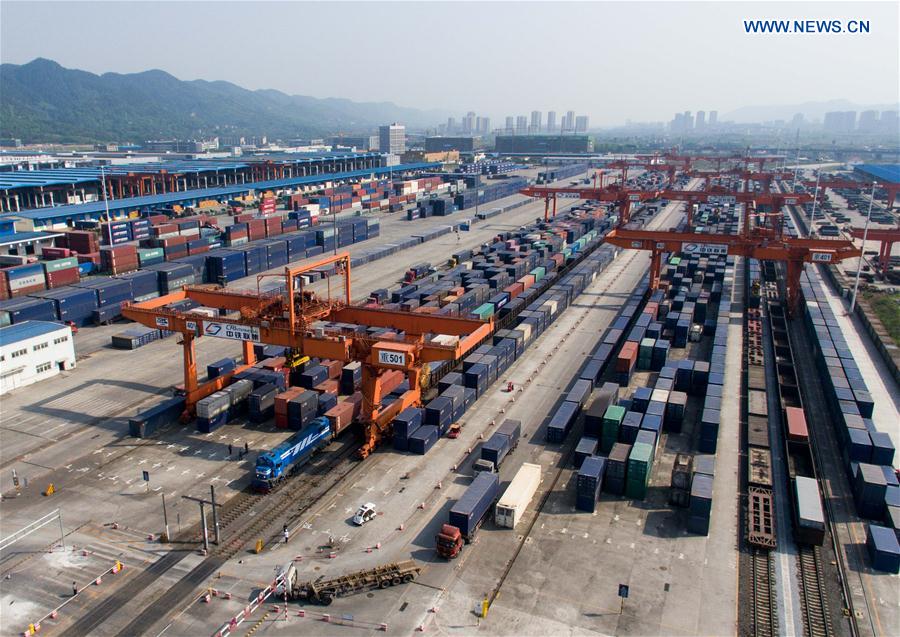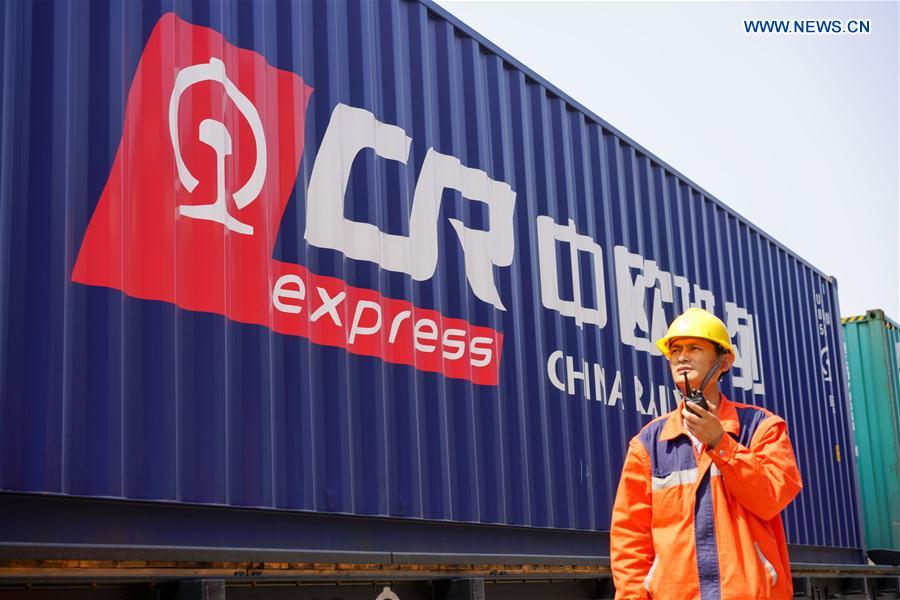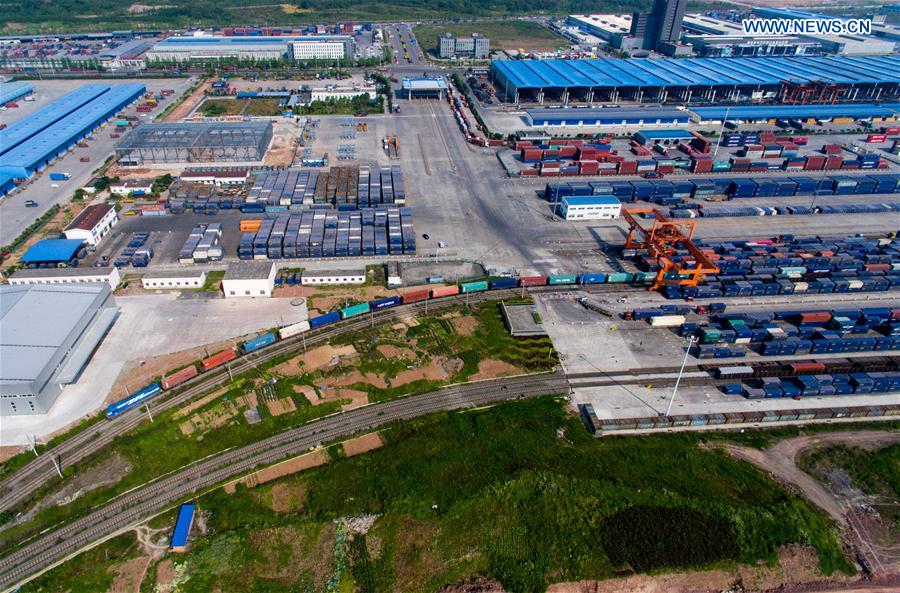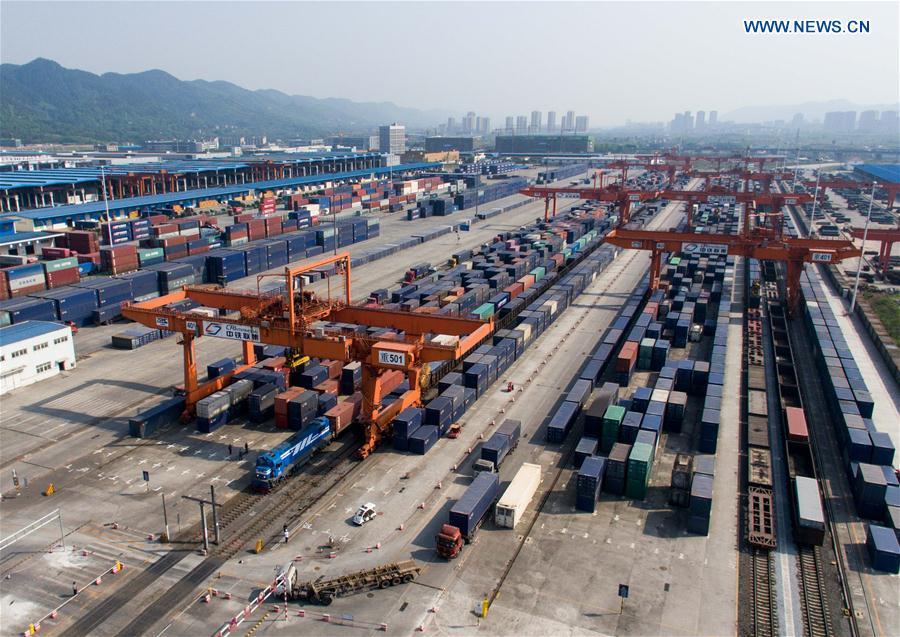Currently, Chongqing-Xinjiang-Europe International Railway connects China's inland city Chongqing to Germany's transportation hub Duisburg. Chongqing Municipality has a plan to expand this transportation route to cover Singapore, Hong Kong, Tokyo, Seoul and other Asian cities with no more than four hours of flight from Chongqing. Chongqing Municipality calls this updated version as Asia-Xinjiang-Europe transportation route, which enables the connection of Asia with Europe via a multi-modal route that includes air, road and water transports.

Aerial photo shows the port station of Chongqing-Xinjiang-Europe railway in Chongqing, southwest China. The Chongqing-Xinjiang-Europe railway, which was put into service in 2011, has boosted economic cooperation between all the countries along the route. (Xinhua/Liu Chan)

A worker stands by a Chongqing-Xinjiang-Europe regular cargo train at the railway port station in Chongqing, southwest China, April 14, 2017. The Chongqing-Xinjiang-Europe railway, which was put into service in 2011, has boosted economic cooperation between all the countries along the route. (Xinhua/Liu Chan)
According to Yang Liqiong, Deputy Director of Chongqing Economic and Information Commission, the transportation costs would be substantially reduced with a "four-hour air freight economic circle" to transport European cargoes received via Chongqing-Xinjiang-Europe Railway to above Asian cities via air freight.
By updating the Chongqing-Xinjiang-Europe Railway to Asia-Xinjiang-Europe transportation route, Chongqing will connect the "Maritime Silk Road" with the "Land-route Silk Road", says Li Muyuan, secretary general of the Intermodal Transport Branch of China Communications and Transportation Association. China may use this opportunity to better fit into and integrate with global trade and therefore promote the Belt and Road Initiative (BRI).

Aerial photo taken on April 14, 2017 shows a Chongqing-Xinjiang-Europe regular cargo train leaving the railway port station in Chongqing, southwest China. The Chongqing-Xinjiang-Europe railway, which was put into service in 2011, has boosted economic cooperation between all the countries along the route. (Xinhua/Liu Chan)
-- Maiden journey of Chongqing-Xinjiang-Europe Railway
The first freight train to service the Yuxinou (Chongqing-Xinjiang-Europe) International Railway, which runs from Chongqing to Europe via Xinjiang, completed its maiden journey in Frankfurt, Germany on Oct 14 2016.
The train was loaded with 26 large postal parcels and 139 packages, which were dispatched to different places in Germany upon their arrival.
In May, the General Administration of Customs approved Chongqing as a pilot city to carry out rail freight transportation between China and Europe.
Once cargo is cleared and declared by customs officials in Chongqing, it is permitted to pass through countries along its route. To ensure a secure journey and safeguard against the tampering of cargo, data is shared among customs officials along the route.
The opening of the intercontinental railway marks a new mode of international freight transportation and saves as much as 20 days in travel time compared to sea freight. It also reduces the cost of transportation by 80 percent compared to air freight.
Officials expect the railway to boost cross-border e-commerce, strengthen economic and trade exchanges and industrial interconnection between Asian and European countries.




 A single purchase
A single purchase









